ReliabilityX Blog
Creating a departmental plan: your roadmap to success, written by: joe anderson.

In any organization, departmental success is key to overall success. To achieve this, it’s essential to have a clear roadmap that outlines your department’s goals, priorities, and strategies. A departmental plan serves as this roadmap, guiding your team towards success and ensuring alignment with the organization’s objectives. In this blog, we’ll explore the importance of creating a departmental plan and provide a step-by-step guide to help you create one for your team.
Why You Need a Departmental Plan
A departmental plan is essential for several reasons:
- Clarity of Purpose : It provides clarity on your department’s purpose, goals, and priorities, ensuring that everyone is aligned and working towards the same objectives.
- Alignment with Organizational Goals : It ensures that your department’s goals and strategies are aligned with the broader goals of the organization, contributing to overall success.
- Resource Allocation : It helps you allocate resources, such as budget, personnel, and time, effectively to achieve your goals.
- Performance Monitoring : It provides a framework for monitoring and evaluating your department’s performance, allowing you to make adjustments as needed.
How to Create a Departmental Plan
Creating a departmental plan involves several key steps:
- Define Your Goals : Start by clearly defining your department’s goals. These should be specific, measurable, achievable, relevant, and time-bound (SMART).
- Assess Your Current Situation : Conduct a thorough assessment of your department’s strengths, weaknesses, opportunities, and threats (SWOT analysis). This will help you identify areas for improvement and potential challenges.
- Develop Strategies : Based on your goals and SWOT analysis, develop strategies to achieve your goals. These should outline the actions you will take to address your department’s weaknesses, leverage its strengths, and capitalize on opportunities.
- Allocate Resources : Determine what resources you will need to execute your strategies, including budget, personnel, and technology.
- Create an Action Plan : Break down your strategies into actionable steps, assigning responsibilities and setting timelines for each task.
- Monitor and Evaluate Progress : Regularly monitor and evaluate your department’s progress towards its goals. This will help you identify any issues early on and make necessary adjustments.
- Review and Update Your Plan : Your departmental plan should be a living document that is regularly reviewed and updated to reflect changes in your department or the broader organization.
Tips for Success
- Communicate Your Plan : Ensure that your team is aware of and understands the departmental plan. This will help create buy-in and alignment towards common goals.
- Stay Flexible : While it’s important to have a plan, it’s also important to remain flexible and adapt to changes as needed.
- Celebrate Successes : Acknowledge and celebrate achievements along the way to keep morale high and motivation strong.
- Seek Feedback : Regularly seek feedback from your team and stakeholders to ensure that your plan remains relevant and effective.
Conclusion
A departmental plan is a powerful tool that can guide your team towards success. By defining clear goals, developing strategies, allocating resources, and regularly monitoring progress, you can create a roadmap that leads to departmental excellence. Use the steps outlined in this blog to create a departmental plan that sets your team up for success.

Related Content

A Guide to Developing a Supervisory Skill Set in Maintenance
Join our newsletter to get the latest updates.
" * " indicates required fields

Content , Strategic Development
How to build a department from ground zero.

“The only constant is change.”
Heraclitus, Greek Philosopher of the late 6th century BCE
Delivery of a specific product or service requires work is accomplished using a system of clearly defined processes to achieve a common goal. This is the core definition of a department. Much of the work that Pacific Crest Group does is based on building departments for our clients’ businesses designed explicitly to assist them in being more efficient and profitable.
Benefits of Building a Department
The purpose of creating a department is to provide a structure that increases the ability of a team of individuals in planning, problem solving and decision making for the company. In order to be effective in this directive, it is critical the department remains focused on fulfilling a specific value proposition.
Creating the Department’s Value Proposition
Each department’s value proposition must be in alignment with the organization’s overall strategic initiatives. Review the entity’s long-term business plan, vision, mission and objectives. Know how progress is tracked, measured and managed. What are the company’s Key Performance Indicators (KPI)?
Given your analysis, what role will the department play in meeting one or more of the organization’s goals?
Identifying Resource Needs
What knowledge, talent and skills will team members need to realize the value proposition? How many participants do you need to be successful? How do you select, develop and retain these people?
What support will be required to get the work done? How will you create a positive and collaborative culture? What systems and processes are required to allow people in the department to communicate and work together efficiently and effectively?
The best approach is to create job descriptions, skill profiles and work specifications for all department employees. Create definitive policies, procedures and standards for advancement. Invest in technologies that help team members excel.
Installing Metrics for Success
It is imperative to install solid analytics, systems for testing and for measuring performance right from the start. This is the only way to determine which processes work and which do not. It is also the most effective way to track the Return on Investment (ROI) the department will contribute to the achievement of the company’s long-term goals.
Designing a Process Map
The process map defines visually what and how a department will fulfill its value proposition. It indicates what needs to be measured to identify and assess performance improvements. The map documents each step that will be taken and when.
Preparing for Constant Change
Invest the time and effort required to document the processes that keep the department running efficiently. The documentation must emphasize the roles, objectives and tasks of each participant. Plan on employee transitions occurring no matter what systems you have in place.
How We Can Help You
Pacific Crest Group provides professional services that keep your business focused on your critical objectives. We provide strategic Accounting and Human Resource (HR) services created specifically to help you meet your goals. Through exemplary customer service, clearly defined policies and procedures as well as a forward looking perspective, we provide the outsourced solutions your business needs to grow. A PCG professional is happy to meet with you to discuss solutions for your unique requirements designed to maximize all of your business opportunities.
Marin Business Forum Event
Join us for a special event on “Understanding Personalities to Optimize the Use of Talent” on Thursday October 13, 2016 from 5 PM to 7 PM in the Community Room located at 300 Drake’s Landing Road in Greenbrae. The Community Room is adjacent to Jason’s Restaurant.
JavaScript seems to be disabled in your browser. For the best experience on our site, be sure to turn on Javascript in your browser.
Newly Launched - AI Presentation Maker

Researched by Consultants from Top-Tier Management Companies
AI PPT Maker
Powerpoint Templates
PPT Bundles
Kpi Dashboard
Professional
Business Plans
Swot Analysis
Gantt Chart
Business Proposal
Marketing Plan
Project Management
Business Case
Business Model
Cyber Security
Business PPT
Digital Marketing
Digital Transformation
Human Resources
Product Management
Artificial Intelligence
Company Profile
Acknowledgement PPT
PPT Presentation
Reports Brochures
One Page Pitch
Interview PPT
All Categories
Top 10 Department Plan Templates with Samples and Examples

Prerna Leekha
In the bustling landscape of organizational dynamics, departmental plan templates stand as quiet architects, shaping the future of independent departments within the larger tapestry of the organization. These templates are essential for an organization to define and communicate various department’s strategies, goals, and plans. They act as a roadmap that guides departments to ensure synergy and togetherness at all organizational levels.
Read this blog if you are planning to make departmental budgets for your organization.
SlideTeam presents editable PowerPoint templates to provide a framework for organizational planning, clarifying priorities, allocating resources, and tracking progress toward goals. These templates are important for an organization and encourage employees to think strategically about the future.
These templates embody a department's collective aspirations and ambitions, translating them into actionable plans that drive progress and excellence. By providing a clear roadmap for success, these templates empower departments to navigate challenges, seize opportunities, and achieve their full potential within the organization's framework.
Explore our Business Department Budget Templates here !
Let’s dive deep into our top department plan templates!
Template 1: HR Plan for Adding Headcount in Different Department
HR recruits potential employees for an organization. They need to track the number of employees required in different departments. Keeping a record of the people needed to complete work is essential in company departments; HRs can download our slides to plan for adding headcount in various departments within an organization. Through the help of a graph, you can navigate the employees required in different departments in different years. These slides will also help trace whether the number of employees required in different departments has increased or decreased over the years.
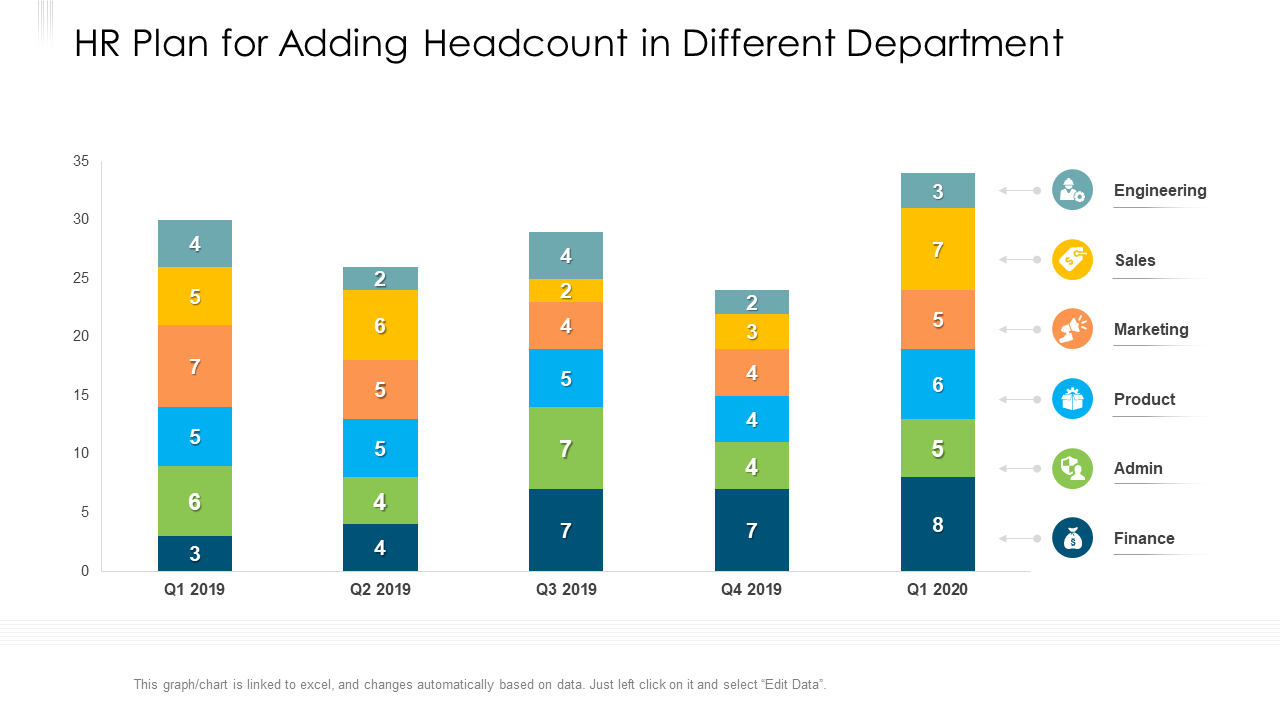
Click to download
Template 2: Department Store Business Plan Word Document Report
A business plan plays a vital role in the success of the business. The business plan provides a roadmap for your business to attract business, understand business, set milestones, milestone planning, and risk management. SlideTeam’s Department store Word document report contains 62 customizable slides for a business plan. These ready-made slides will provide pages for essential contents, industry analysis, start-up summary, industry restraints, SWOT analysis, competitive landscape, customer analysis, go-to-market strategy, Porter’s five forces, financial modeling, valuation, and exit strategy. Download these slides to create a roadmap for your business.

Download this template
Template 3: Department Strategic Plan PowerPoint PPT Template Bundles
Strategy development for various departments within an organization is different because different departments deal with different things. For instance, the HR department deals with recruitment, the marketing department is responsible for brand awareness, and the operations department deals with supply chain management. You can develop strategies for different departments like IT, finance, operations, sales, HRM, HR, and many more through our customizable PowerPoint slides. These slides allow you to improve inter-departmental communication by strategy development. You can also quickly develop strategic action plans for the sales department and job evaluation in the HRM department.

Download this slide
Template 4: Department Wise Executive Compensation Plan
A compensation plan according to each department is a practical approach to aligning incentives, driving performance improvement, and encouraging employee collaboration. This plan refers to a compensation strategy that aligns executive pay with the performance of specific departments within an organization. SlideTeam brings flexible slides to exercise a strategic approach for executive compensation plans for every department. These slides will provide a strategic approach to demonstrate the expected and actual compensation for various departments. Download our PowerPoint slides to streamline the executive compensation plan for various departments of your company.

Click here to download

Template 5: Department Wise Future Plan for Business Start-up
A strategy or plan is essential to achieve great heights and progress. Download our customized, ready-to-use PowerPoint slides to make future strategies for various departments of your business startup. These PPT slides will outline the proposed, in-progress, and scheduled plans for departments like sales, finance, marketing, and operations. As these templates are completely editable, you can add information according to your requirements. The creative icons for each department make the slides more creative and understandable for the audience.
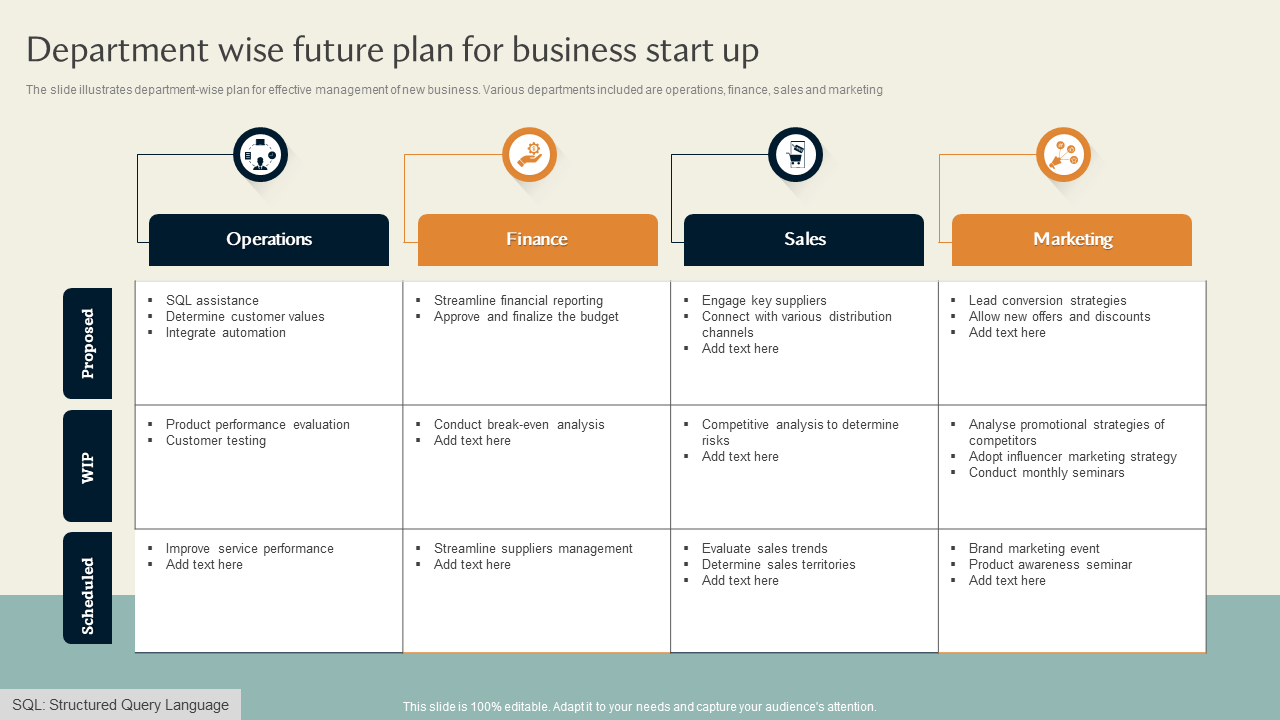
Template 6: Finance Department Structure Plan with Business Types
The finance department's strategic plans are essential to outline different kinds of business for an organization's smooth operation and financial health. Finance management helps manage financial costs, control costs, and provide guidance for business decisions. Our fully editable slides help create a structured finance framework for different-scaled businesses- high-growth start-ups, small businesses, or enterprises. Their essential departments under the CFO are key business features. Download our PowerPoint templates to develop an organized finance structure for your organization.
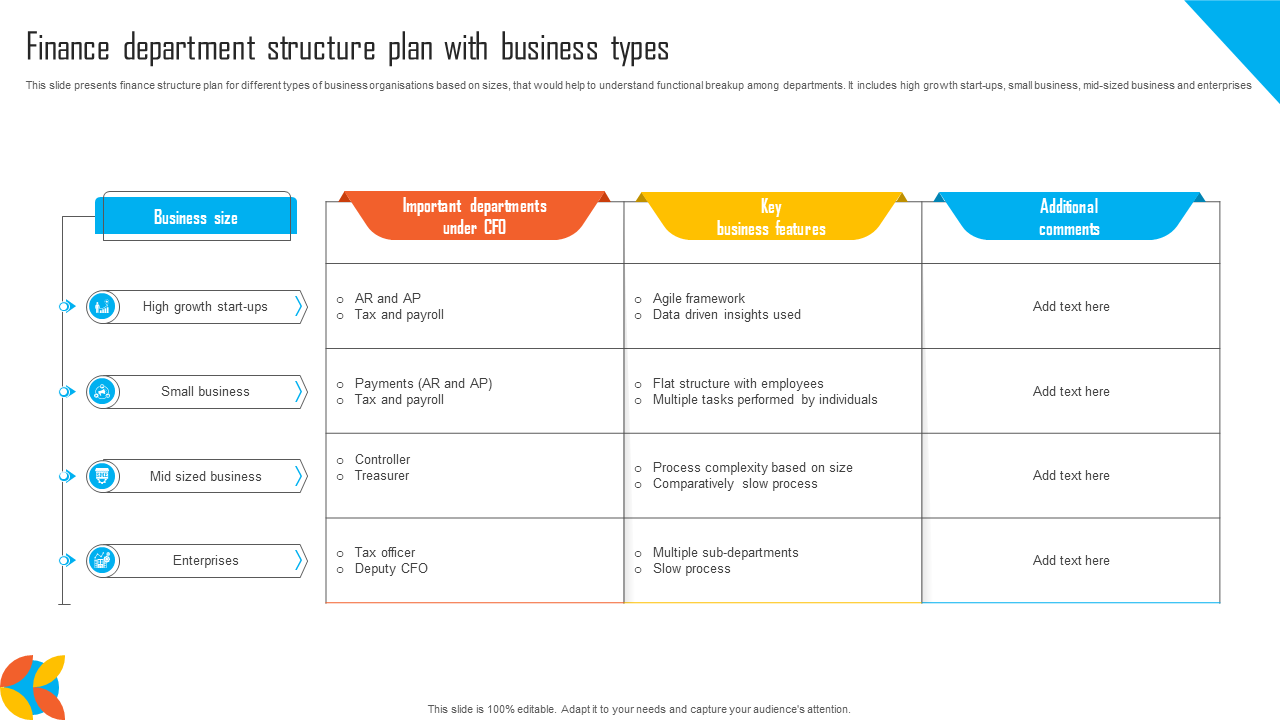
Access this slide
Template 7: BI Weekly Accounting Department Shift Plan
An accounting department shift plan provides a structured approach to scheduling accounting staff, balancing workload, and maintaining continuity in financial operations twice a week. This is a ready to use PowerPoint templates to create makeshift plans for employees in the accounting department. You can add the employees' names, shift times, hourly rates, and total amounts with weekdays for careful consideration of staffing needs, workload distribution, and operational requirements.
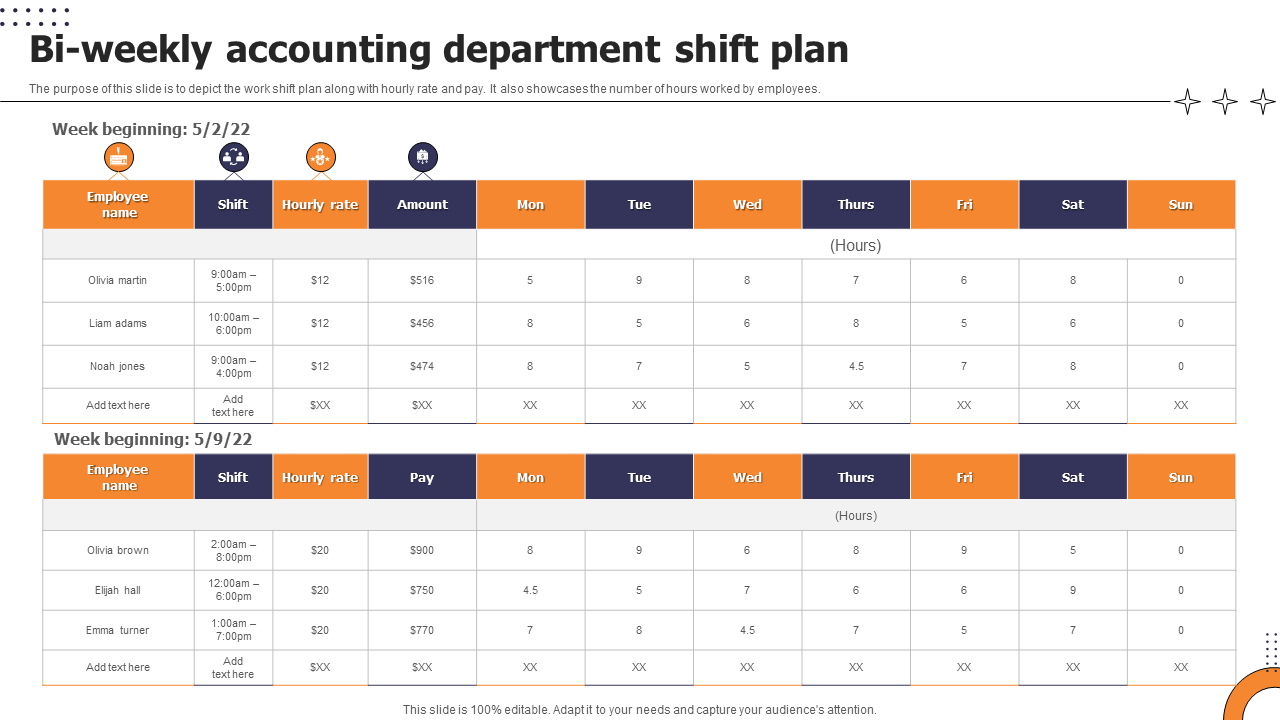
Template 8: Activity strategic Plan Department Framework
A strategic plan is essential for guiding a department's priorities and activities, ensuring that the efforts align with the organization’s goals and objectives. You can outline business activities and strategic frameworks through our editable templates. These slides will provide a structured approach for setting goals and allocating resources. Make your activity strategic plan through this ready-to-use framework for the different departments of your organization. It will ensure the strategy is focused and aligned with the organization’s broader perspectives.

Template 9: Multi department Communication Plan Map with Deliverables
Outlining each department's key objectives, strategies, and deliverables will help ease customer communication. SlideTeam presents PowerPoint slides to demonstrate the deliverable, description, timeline, and delivery methods with the audiences, sales team, HR team, prospectus clients, and key clients. You can also add set timelines, budgets, and descriptions for different audiences. Grab this preset now!
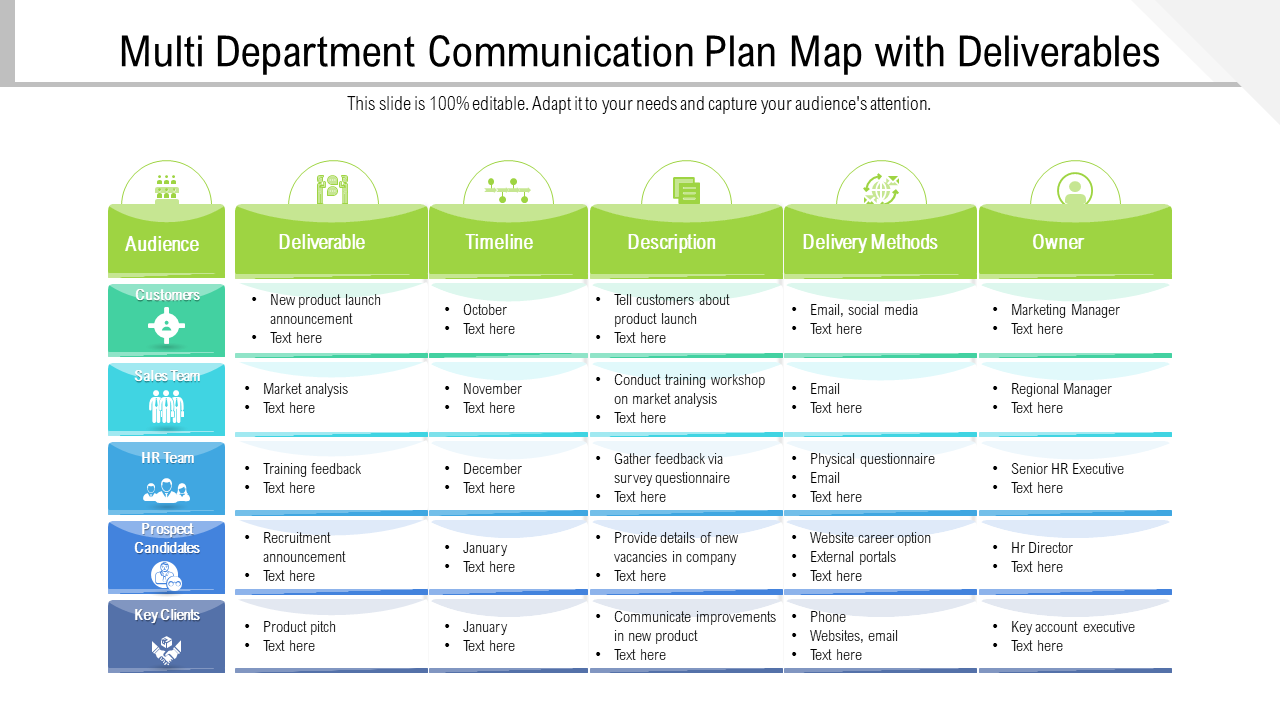
Access this template
Template 10: Organization Financial Department SIPOC Plan
A diagram for the Supplier, Input, Process, Output, Customer (SIPOC) is an effective tool for visualizing and understanding the key elements of an organization's process. Through this pre-designed PPT templates, you can frame a structured chart for the SIPOC for the financial department and regional sales head. Download our ready-to-use PowerPoint templates to organize various components for the financial department.
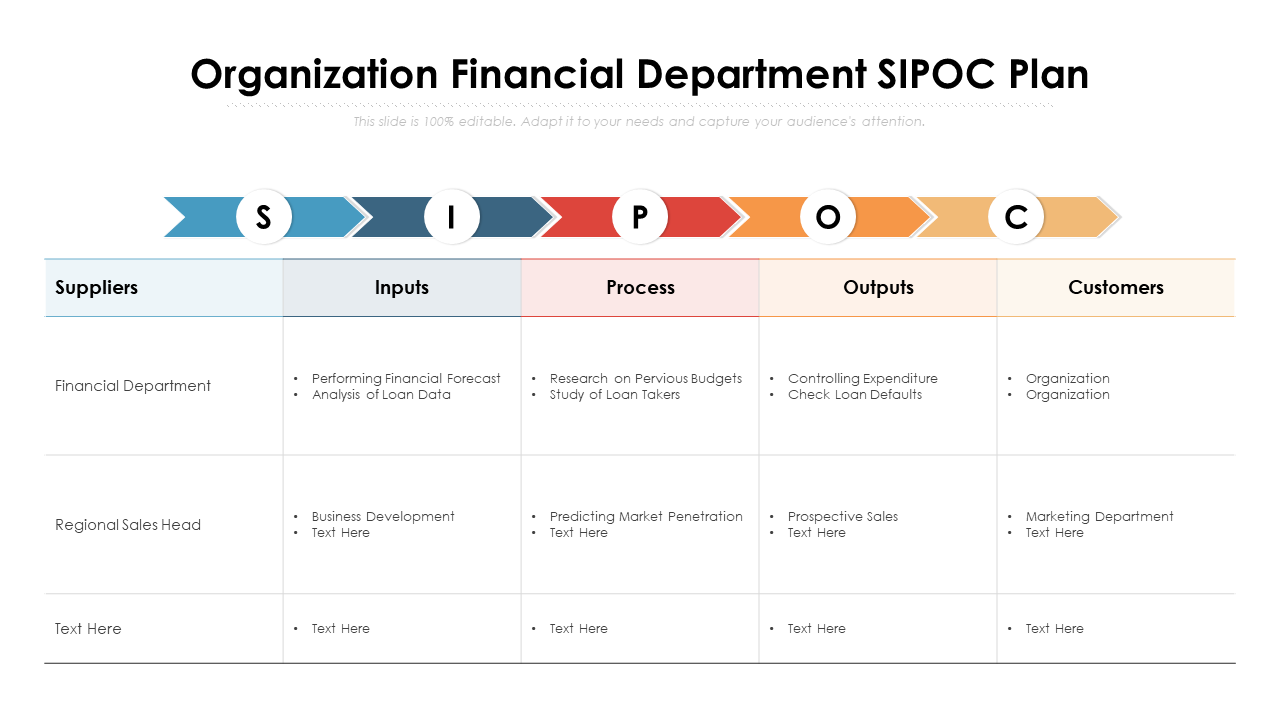
In conclusion, department plan templates provide a structured approach to outline various strategies, objectives, and actions. These PPT templates are an effective tool for enhancing communication, fostering accountability, and reaching organizational objectives. Use these content-ready and custom-made templates to make things clear, effective, and efficient in your operations, leading to further improvement and success. Download our premium PowerPoint templates for organizing various essential departments of your organization.
PS: Click here to explore the transformation roadmap plans to reach your goals.
Related posts:
- Top 7 Three-Year Plan Templates with Examples and Samples
- Top 10 Comprehensive Plan Templates with Samples and Examples
- Top 10 Manager Resume Samples With Templates And Examples
- Top 5 Priority Ranking Templates with Samples and Examples
Liked this blog? Please recommend us

Top 10 India Map Presentation Templates with Examples and Samples
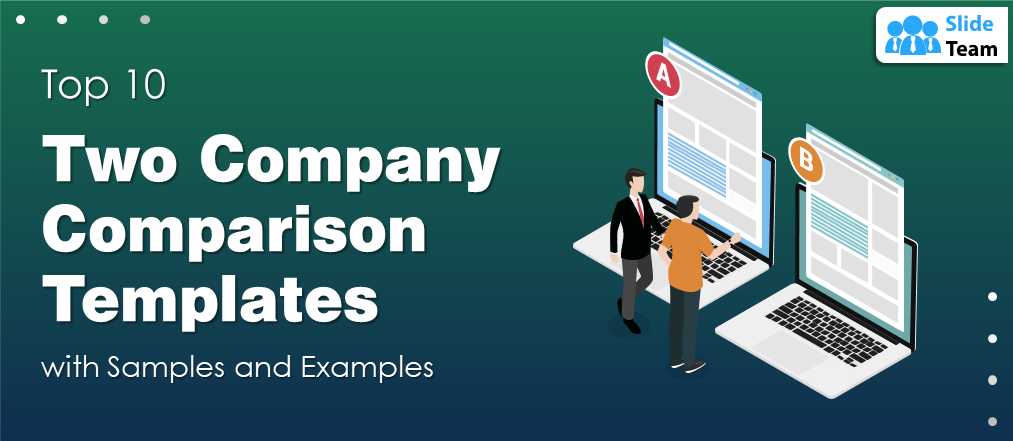
Top 10 Two Company Comparison Templates with Samples and Examples
This form is protected by reCAPTCHA - the Google Privacy Policy and Terms of Service apply.


IMAGES
VIDEO
COMMENTS
An important aspect of being a good department manager is creating an annual tactical plan with initiatives that are directly linked to the company’s overall strategic plan objectives....
Creating a departmental plan involves several key steps: Define Your Goals: Start by clearly defining your department’s goals. These should be specific, measurable, achievable, relevant, and time-bound (SMART).
Each department’s value proposition must be in alignment with the organization’s overall strategic initiatives. Review the entity’s long-term business plan, vision, mission and objectives. Know how progress is tracked, measured and managed.
A departmental business plan is a planning document focused on a specific department within a company. It should discuss your past metrics and discover any pain points that your team experienced. A departmental business plan template may be helpful as you develop your goals and stuck or need points.
A department business plans template allows department leaders to define their goals and strategy for the upcoming period. Department business plans outline a department’s goals, what steps or initiatives the department will undertake to achieve those goals, and the timeline during which these goals should be achieved.
SlideTeam presents editable PowerPoint templates to provide a framework for organizational planning, clarifying priorities, allocating resources, and tracking progress toward goals. These templates are important for an organization and encourage employees to think strategically about the future.